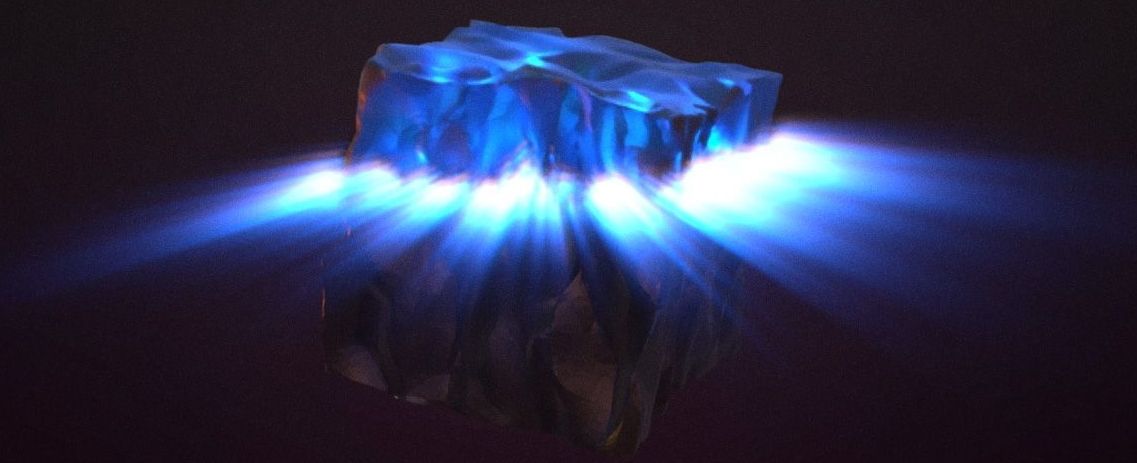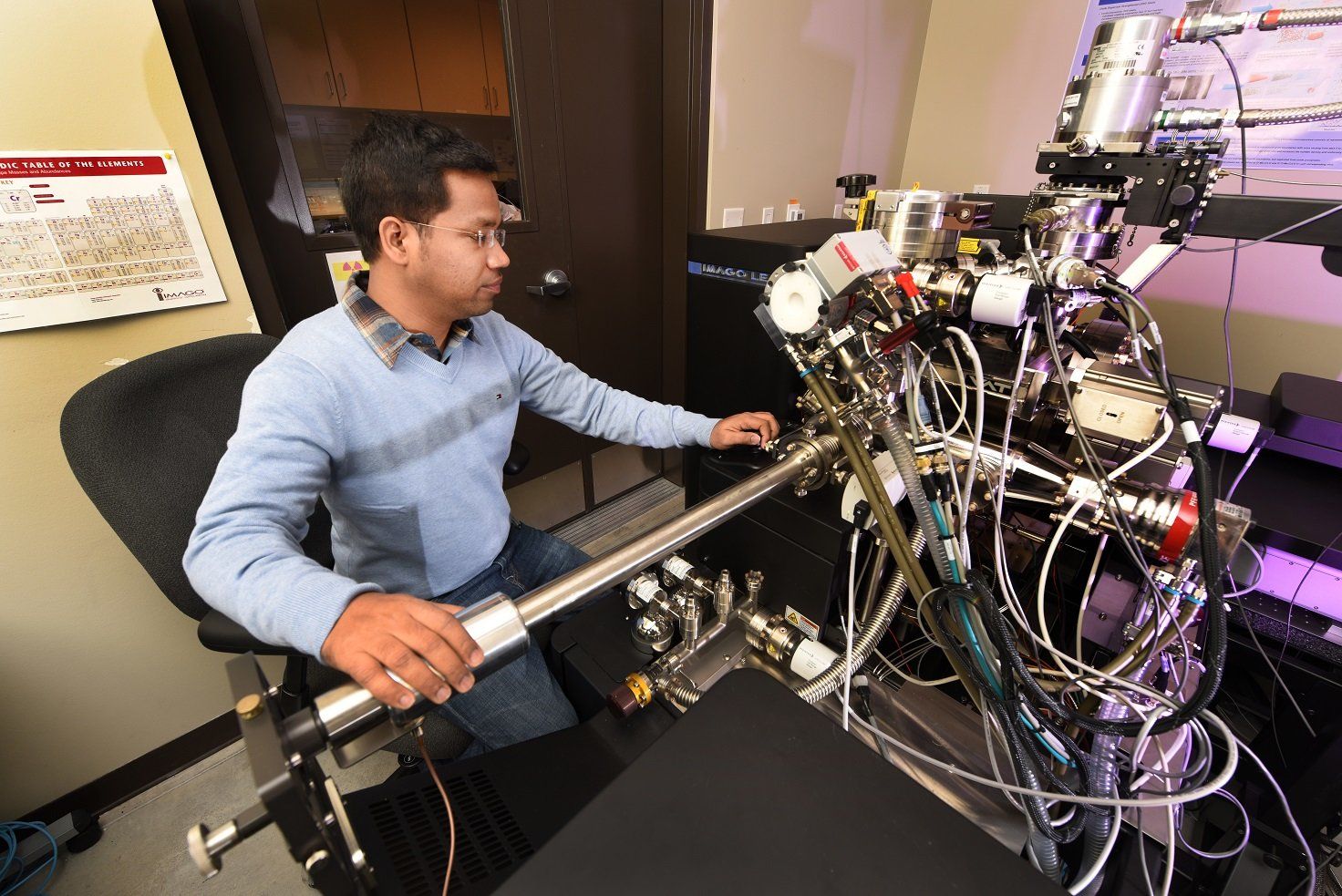Archive for the ‘materials’ category: Page 248
Nov 23, 2018
You’ve got to move fast on #BlackFriday2018 when there are limited quantities
Posted by Michael Lance in categories: cosmology, materials
Here’s a look at fast-moving jet material from the powerful gravity of a supermassive black hole when a star wandered just a little too close: https://go.nasa.gov/2FAO1XB #BlackHoleFriday
Nov 22, 2018
Skeletal imitation reveals how bones grow atom-by-atom
Posted by Nicholi Avery in categories: biotech/medical, materials
Researchers from Chalmers University of Technology, Sweden, have discovered how our bones grow at an atomic level, showing how an unstructured mass orders itself into a perfectly arranged bone structure. The discovery offers new insights, which could yield improved new implants, as well as increasing our knowledge of bone diseases such as osteoporosis.
The bones in our body grow through several stages, with atoms and molecules joining together, and those bigger groupings joining together in turn. One early stage in the growth process is when calcium phosphate molecules crystallise, which means that they transform from an amorphous mass into an ordered structure. Many stages of this transformation were previously a mystery, but now, through a project looking at an imitation of how our bones are built, the researchers have been able to follow this crystallisation process at an atomic level. Their results are now published in the scientific journal Nature Communications.
“A wonderful thing with this project is that it demonstrates how applied and fundamental research go hand in hand. Our project was originally focused on the creation of an artificial biomaterial, but the material turned out to be a great tool to study bone building processes. We first imitated nature, by creating an artificial copy. Then, we used that copy to go back and study nature,” says Martin Andersson, Professor in Materials Chemistry at Chalmers, and leader of the study.
Continue reading “Skeletal imitation reveals how bones grow atom-by-atom” »
Nov 21, 2018
What do sand, glass ⌛ and this technicolor remnant of a supernova 💥 have in common?
Posted by Michael Lance in categories: cosmology, materials
They all contain silica, a mineral that’s widespread on Earth and in space.
Using NASA’s Spitzer Space Telescope, researchers found that the material is produced by the massive explosions of stars. Details: https://go.nasa.gov/2r6Zq7P
Nov 21, 2018
A 24-year-old has invented a new way to break down plastic waste and prevent it from landing in the ocean
Posted by Genevieve Klien in category: materials
BioCellection CEO Miranda Wang, 24, has invented a new way to break down plastic waste and prevent it from polluting the ocean.
Nov 20, 2018
Meta-surface corrects for chromatic aberrations across all kinds of lenses
Posted by Genevieve Klien in categories: materials, mobile phones
Today’s optical systems—from smartphone cameras to cutting-edge microscopes—use technology that hasn’t changed much since the mid-1700s. Compound lenses, invented around 1730, correct the chromatic aberrations that cause lenses to focus different wavelengths of light in different spots. While effective, these multi-material lenses are bulky, expensive, and require precision polishing or molding and very careful optical alignment. Now, a group of researchers at the Harvard John A. Paulson School of Engineering and Applied Sciences (SEAS) is asking: Isn’t it time for an upgrade?
Nov 20, 2018
Universal Quantum Phenomenon Found in Superconductors
Posted by Genevieve Klien in categories: materials, quantum physics
Experiments suggest that exotic superconducting materials share a “strange metal” state characterized by a quantum speed limit that somehow acts as a fundamental organizing principle.
Nov 19, 2018
Star Trek–like Tech Seals Wounds With a Laser
Posted by Nancie Hunter in categories: biotech/medical, materials
On Star Trek: The Next Generation, Commander Riker had an impressive ability to receive head wounds. Luckily for him, Dr. Crusher could whip out the “dermal regenerator,” a handheld sci-fi tool that healed skin wounds with a colorful laser.
In early tests, this laser-activated silk and gold material held wounds together better than stitches or glue.
As a cloud of gas collapses in on itself, swirling material shoots outward in opposite directions. These jets can travel hundreds of miles per second and spread light-years of space. And although jets are tell-tale signs of star formation, they are not fully understood. NASA’s James Webb Space Telescope will not only enable us to see through the dusty shroud that usually hides star birth, but to dissect the interactions between jets and the surrounding medium of gas and dust. Take a closer look: https://go.nasa.gov/2FDfJmy
Nov 17, 2018
Treated superalloys demonstrate unprecedented heat resistance
Posted by Genevieve Klien in categories: materials, nuclear energy
Researchers at Idaho National Laboratory have discovered how to make “superalloys” even more super, extending useful life by thousands of hours. The discovery could improve materials performance for electrical generators and nuclear reactors. The key is to heat and cool the superalloy in a specific way. That creates a microstructure within the material that can withstand high heat more than six times longer than an untreated counterpart.

















